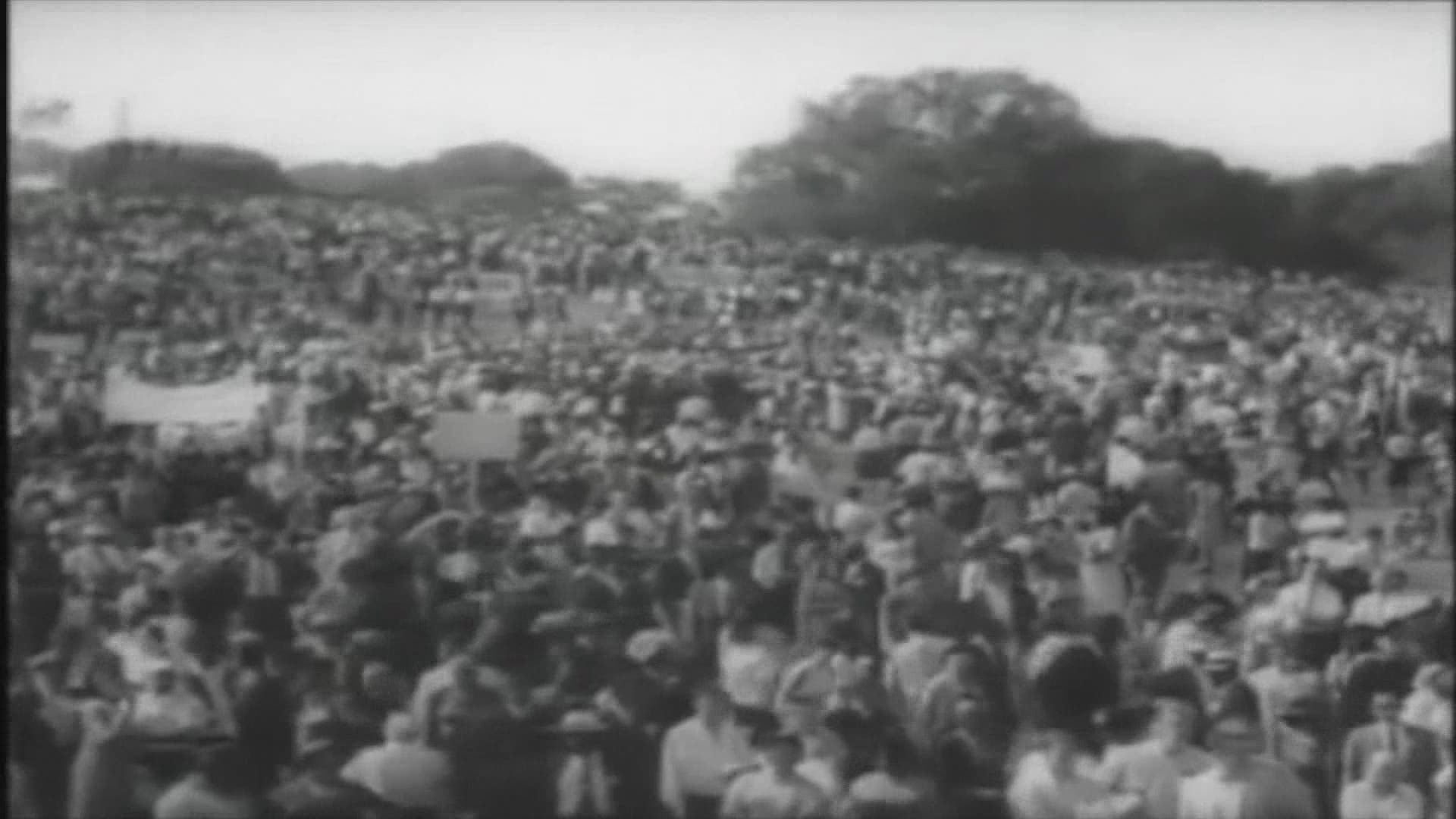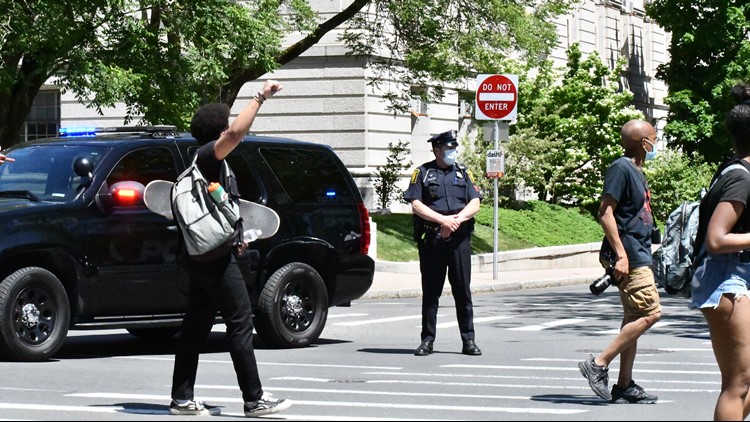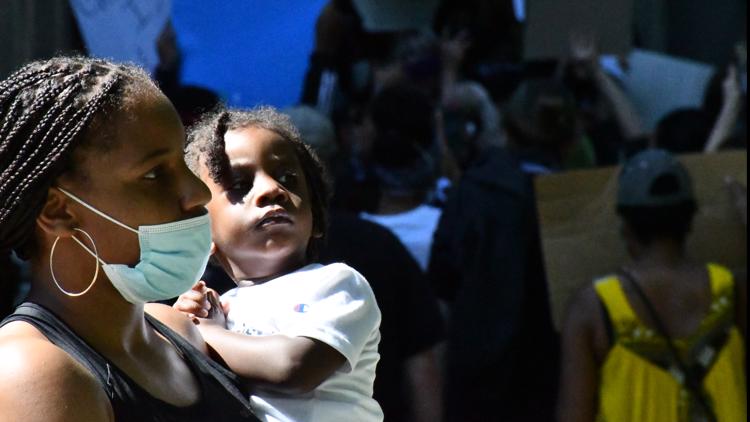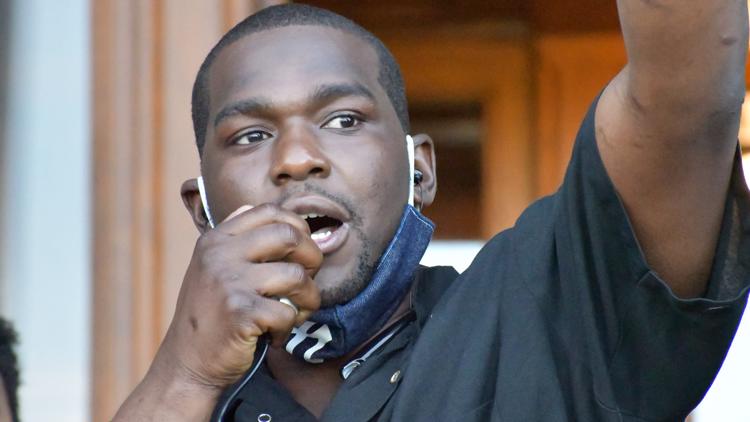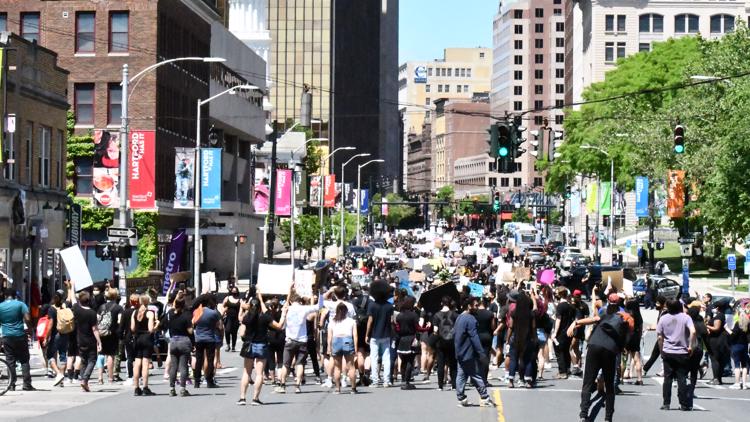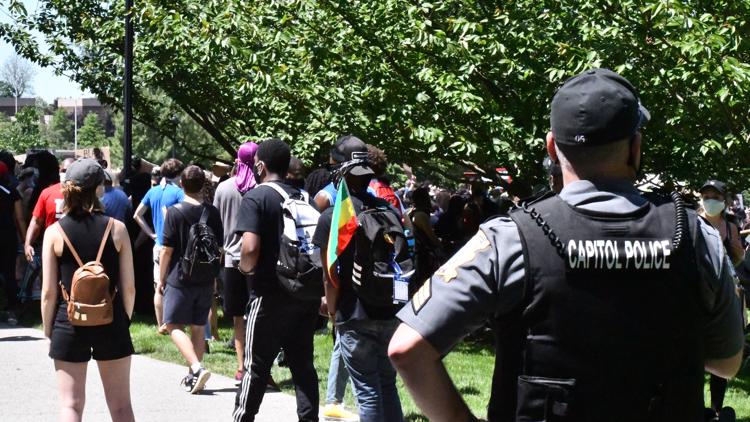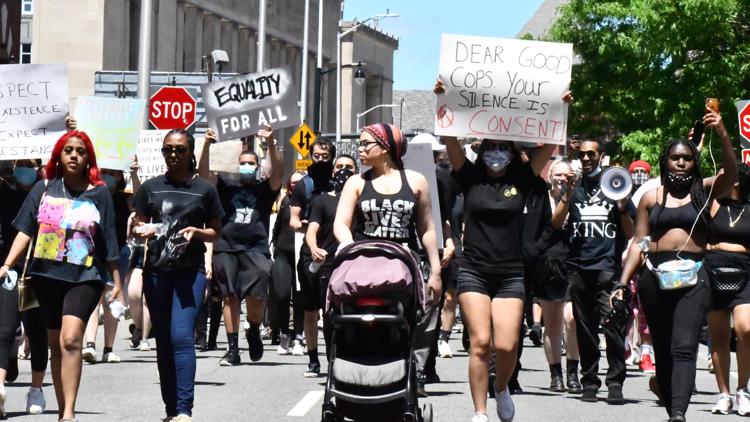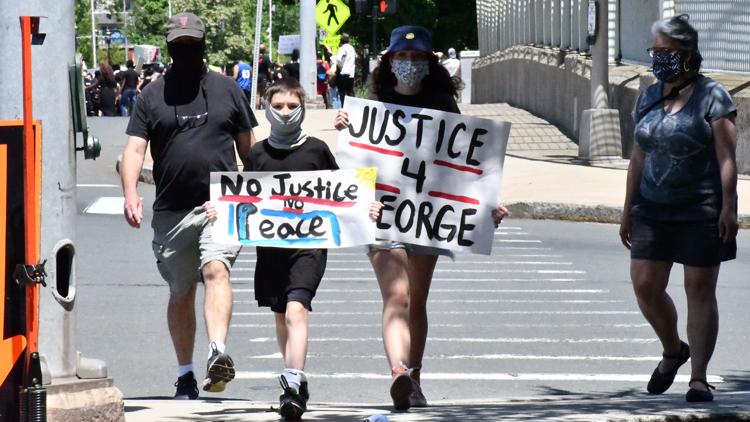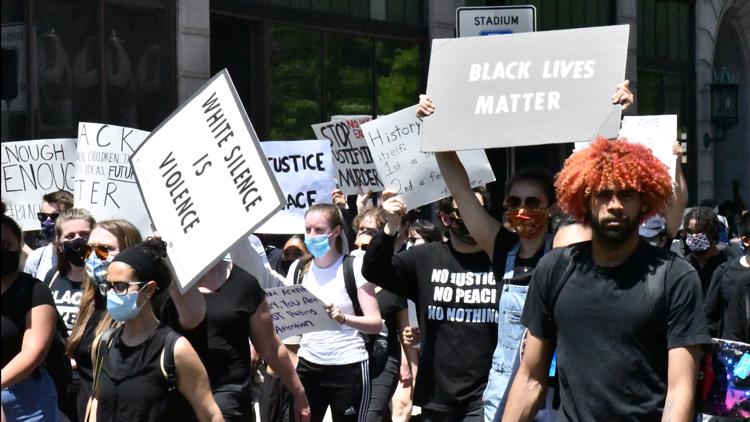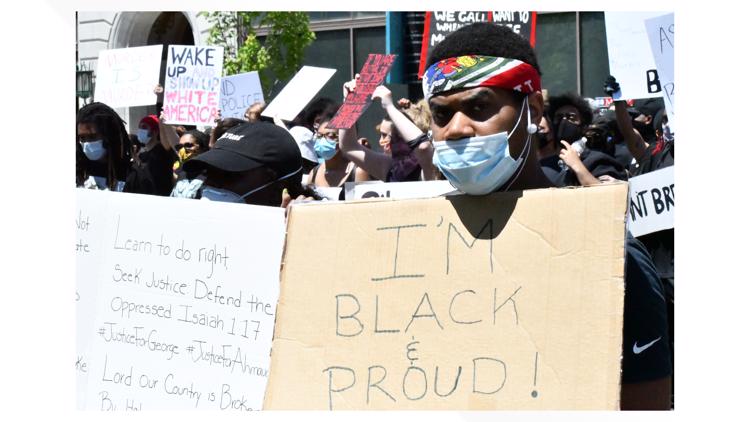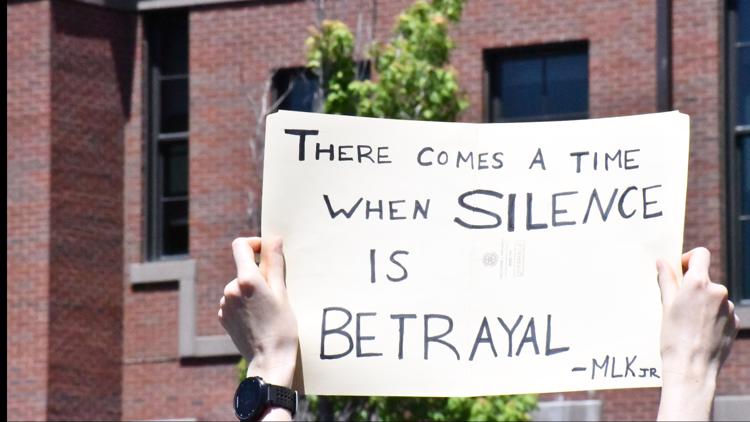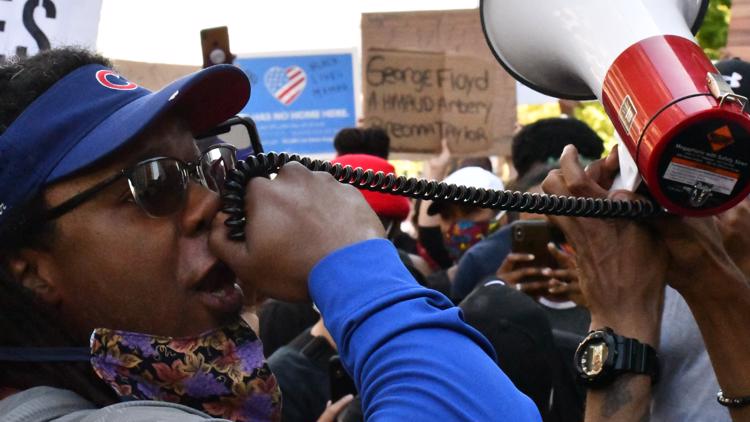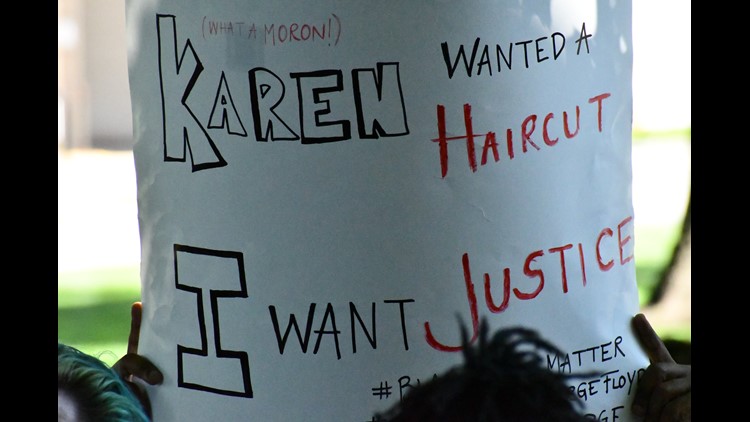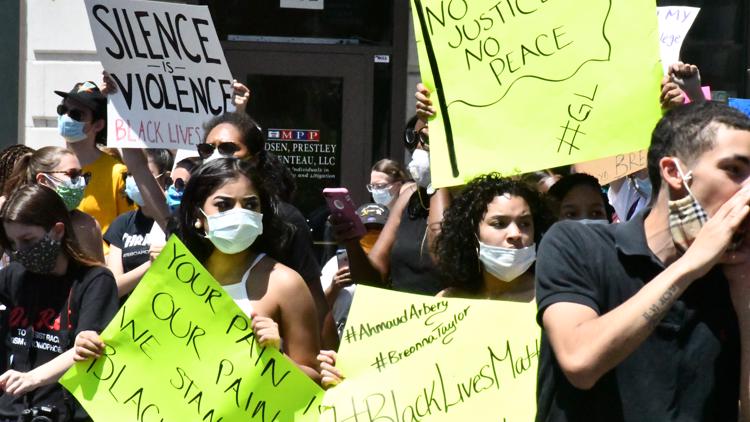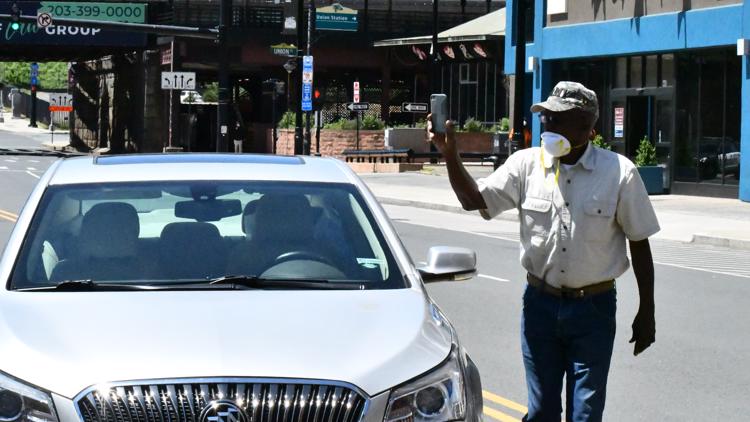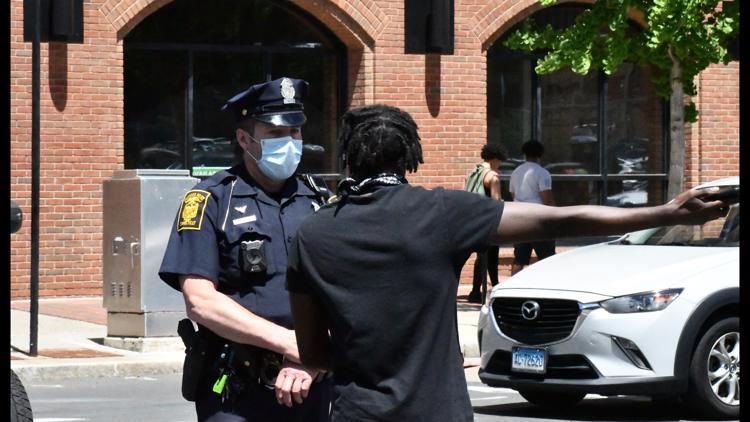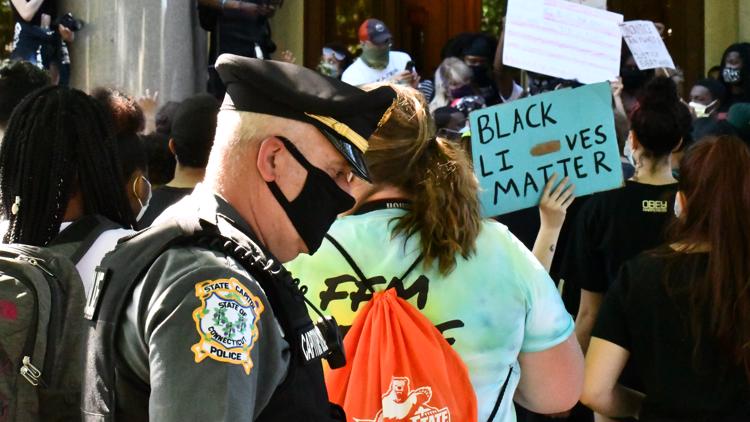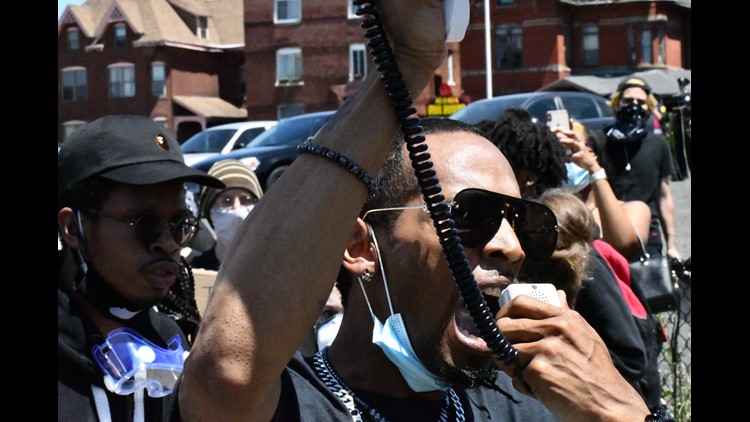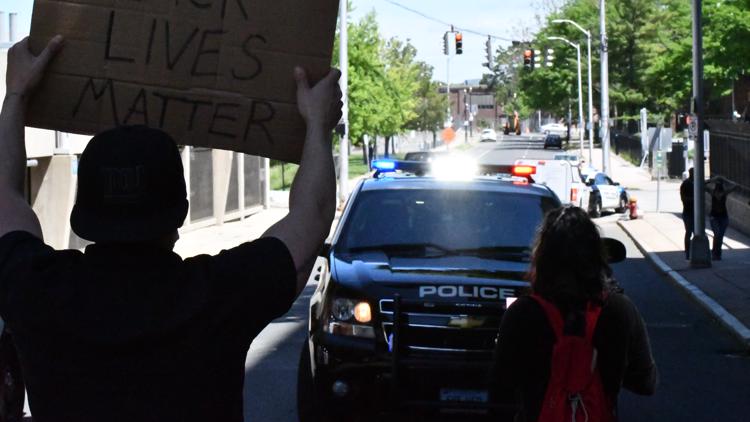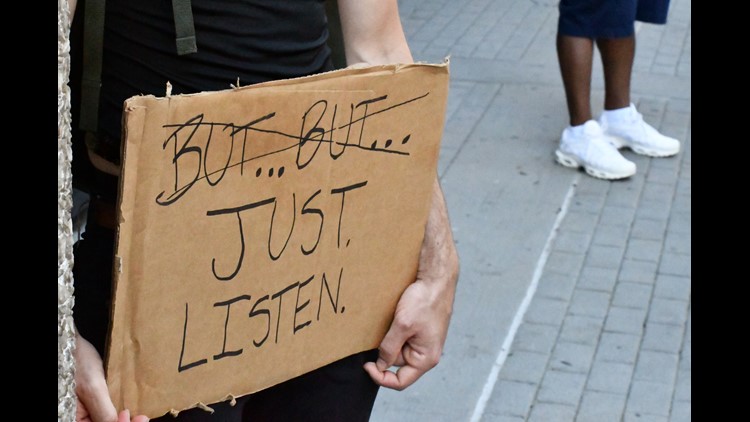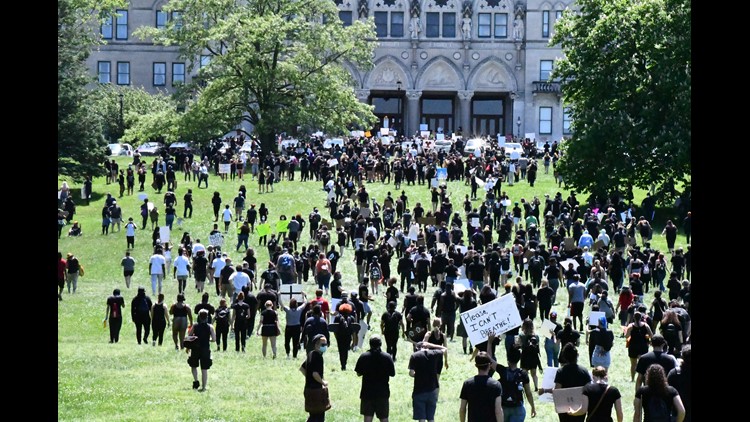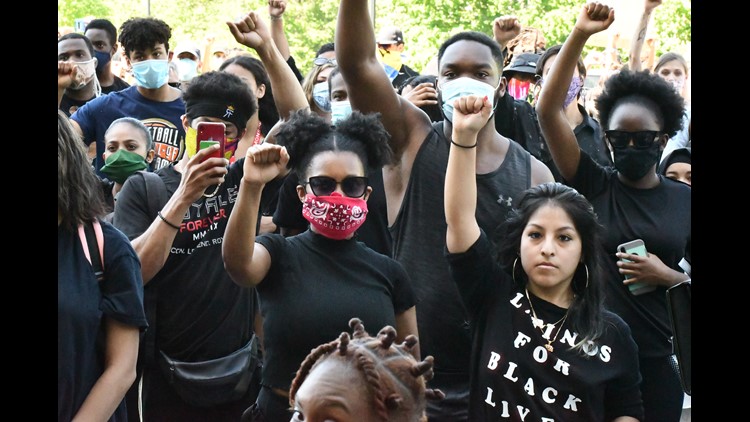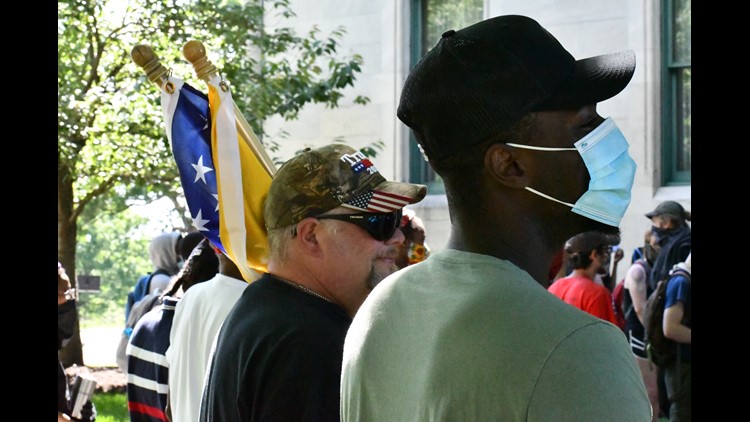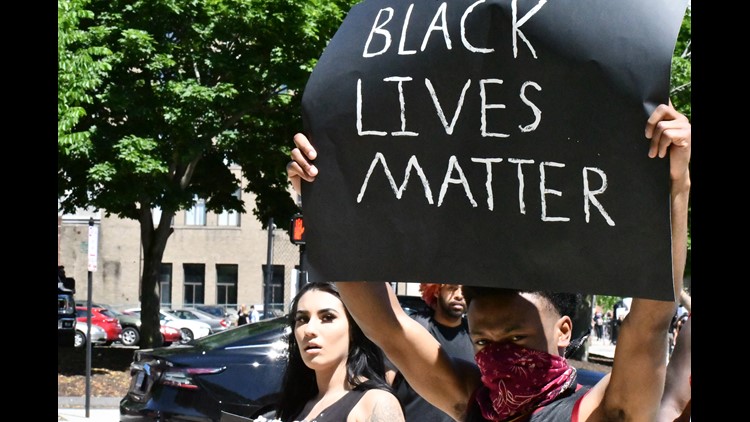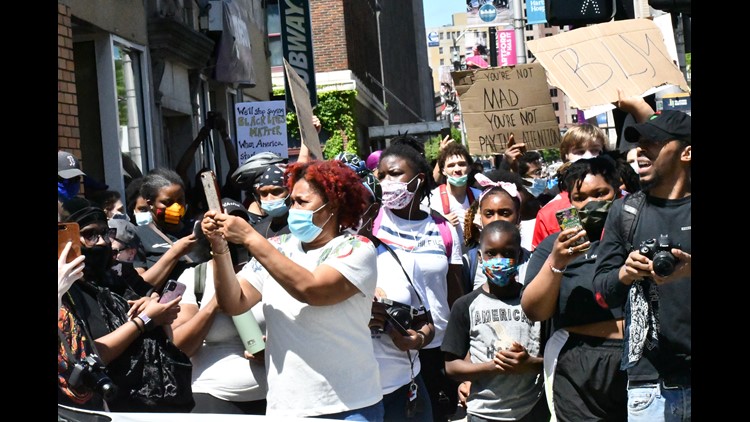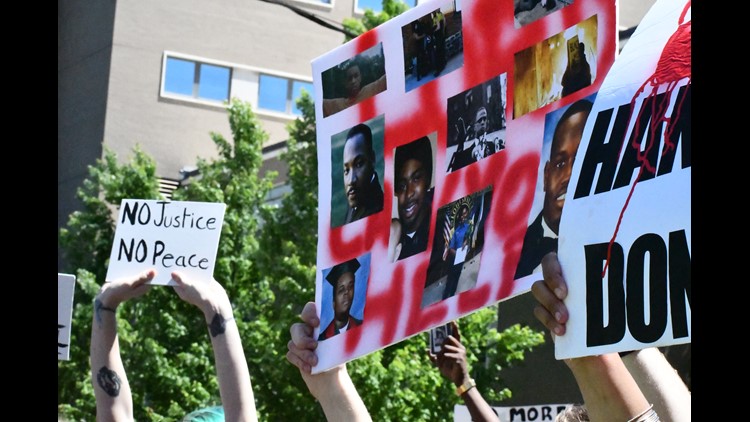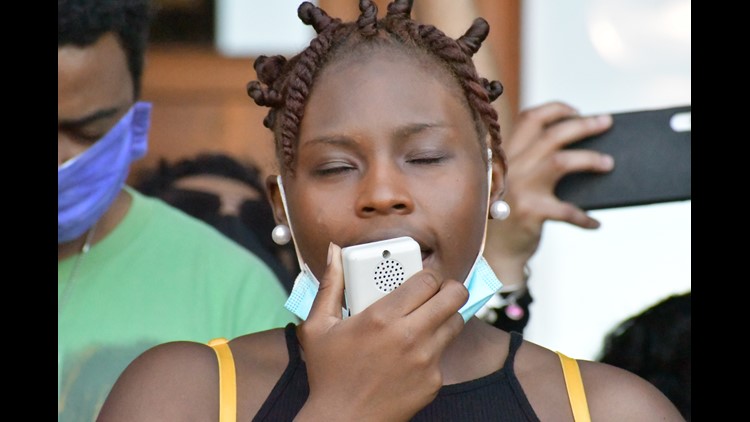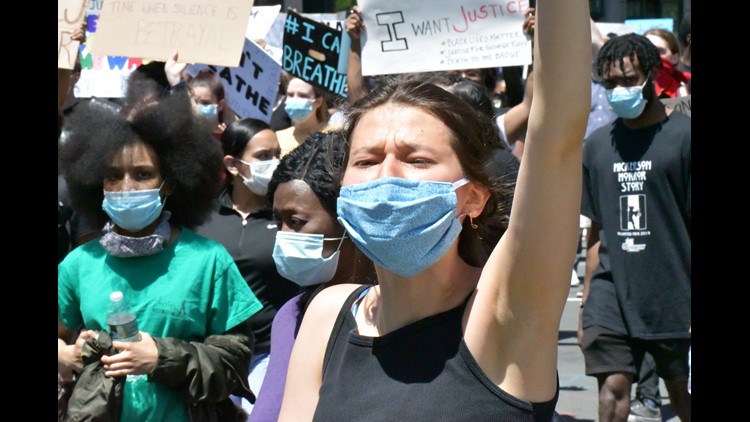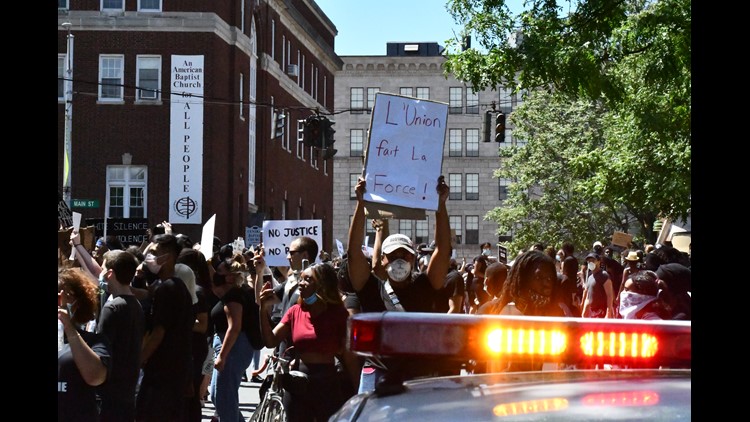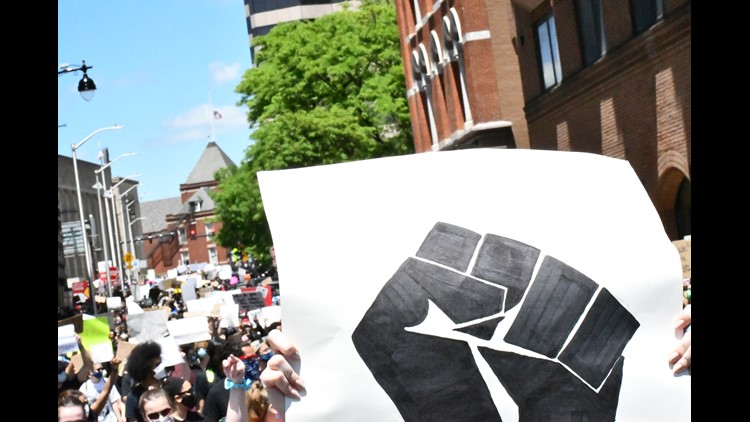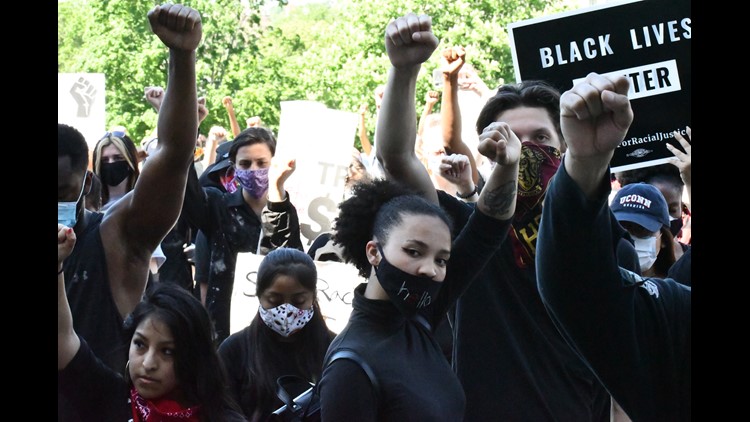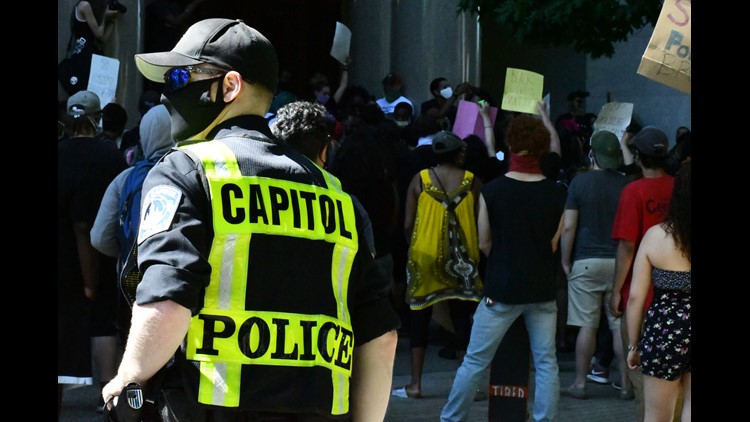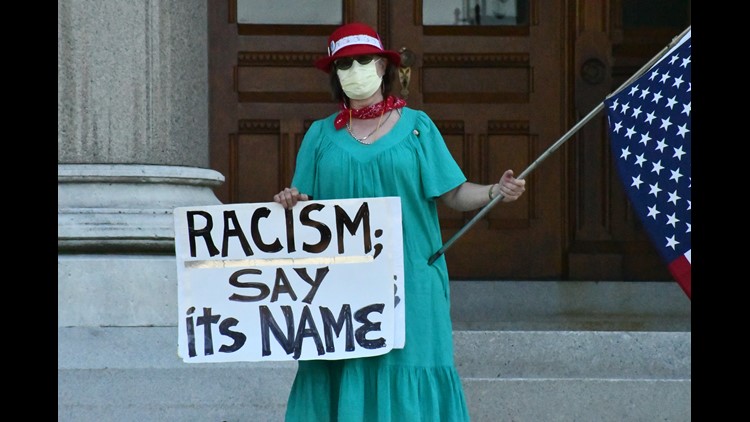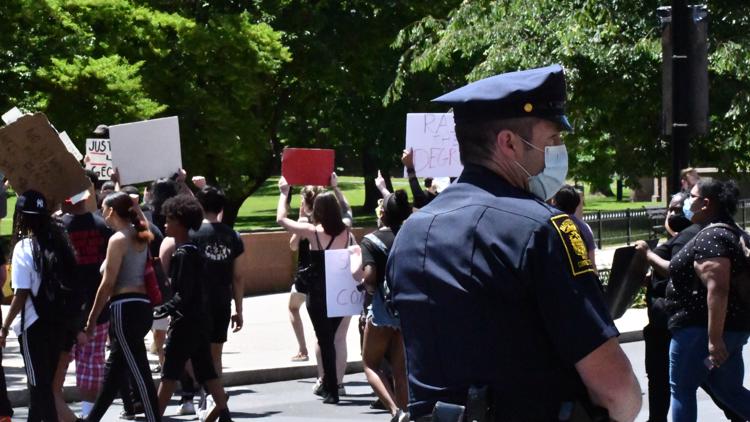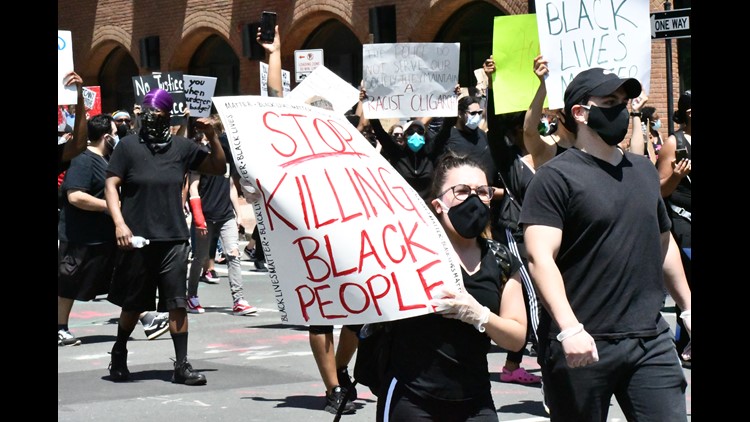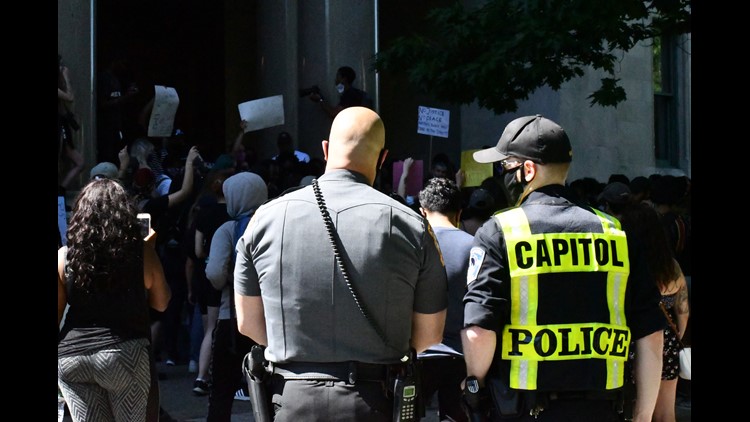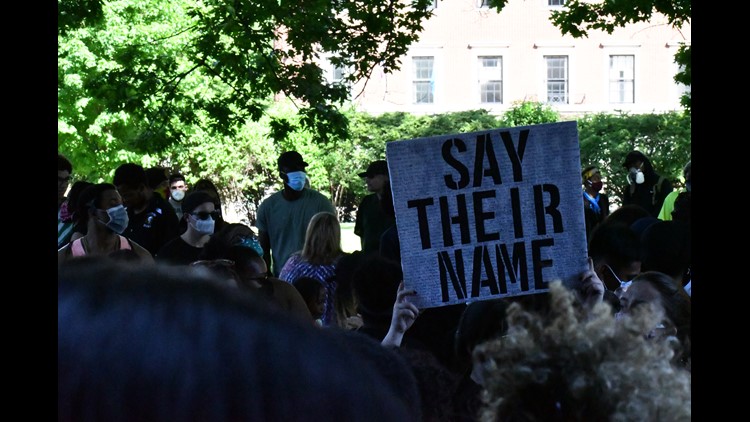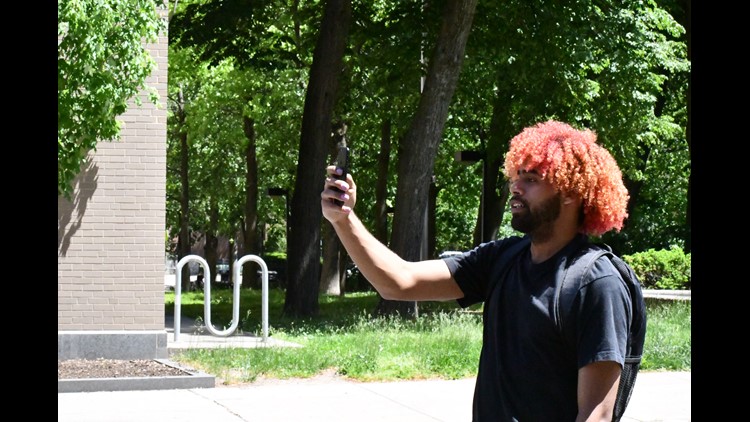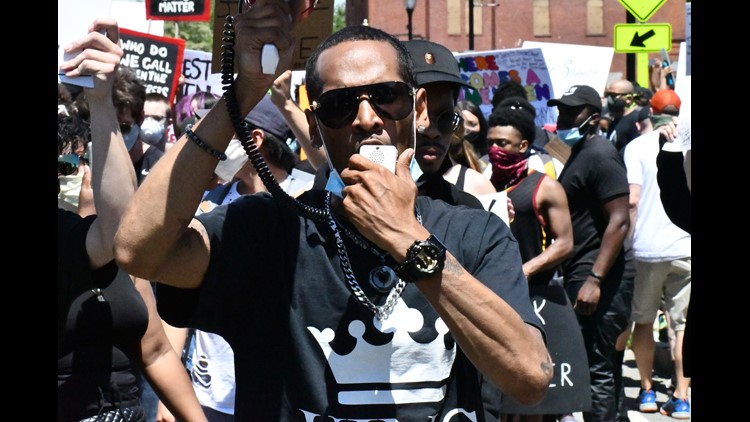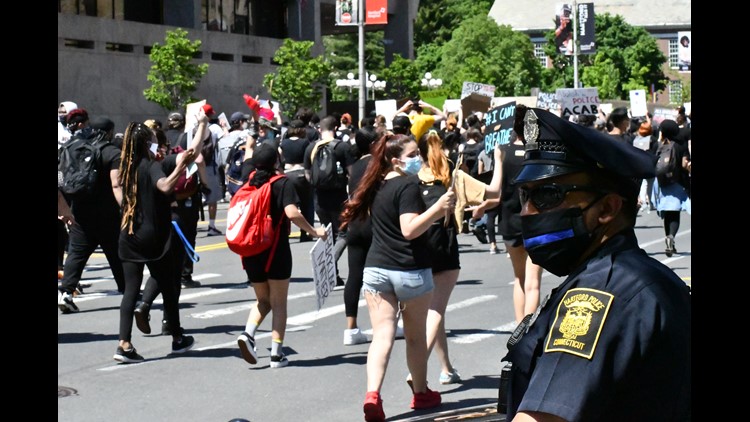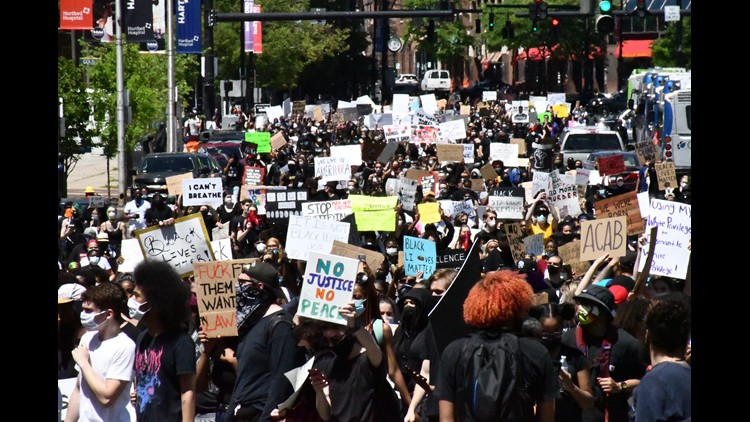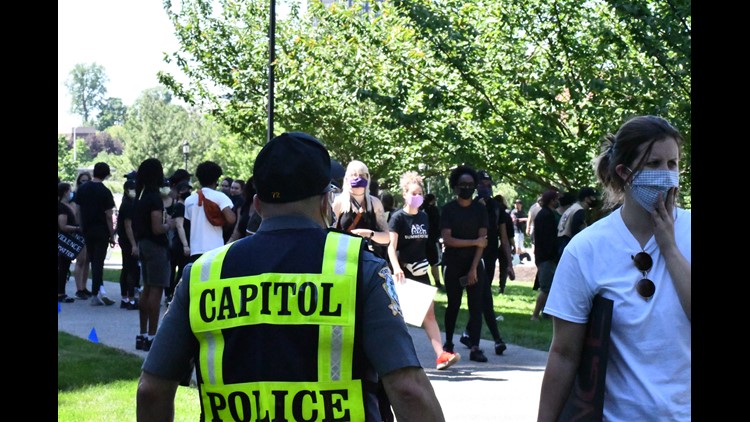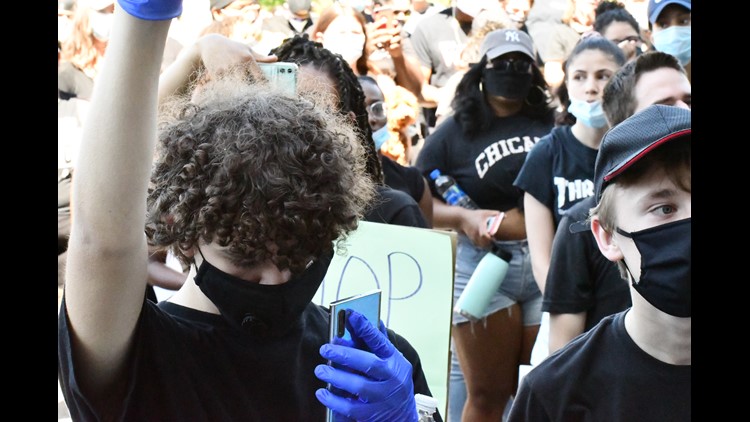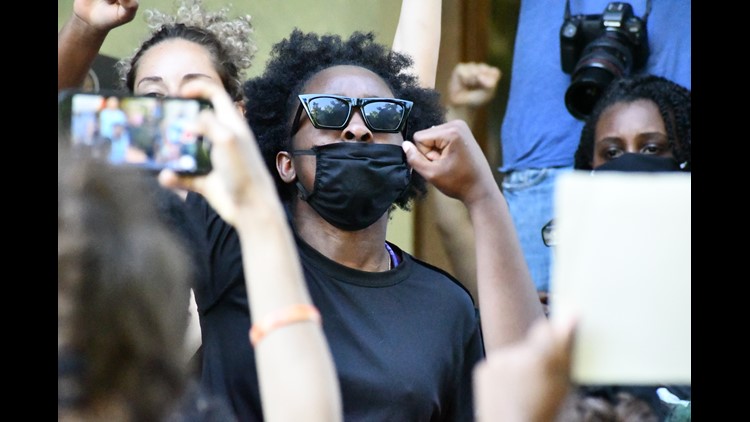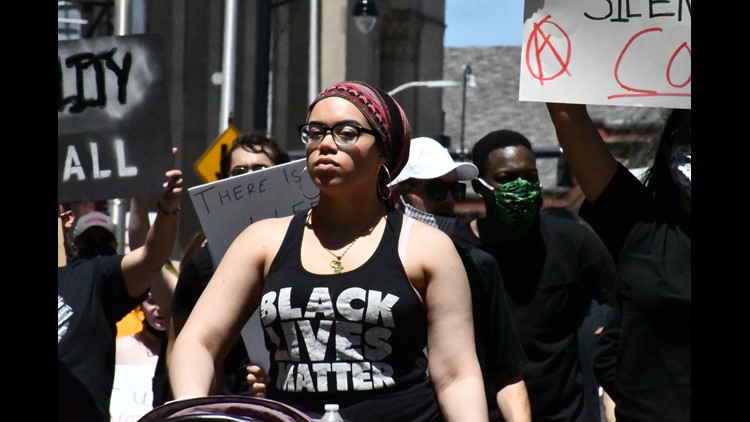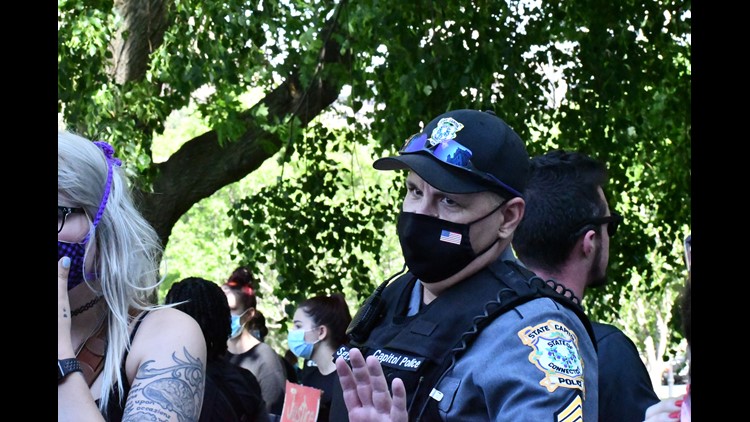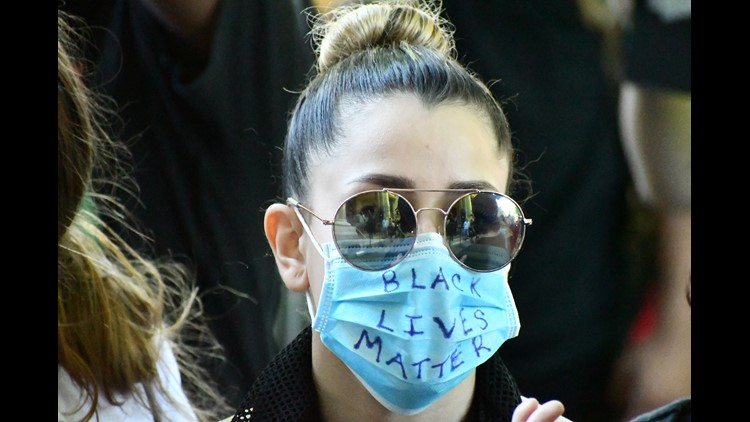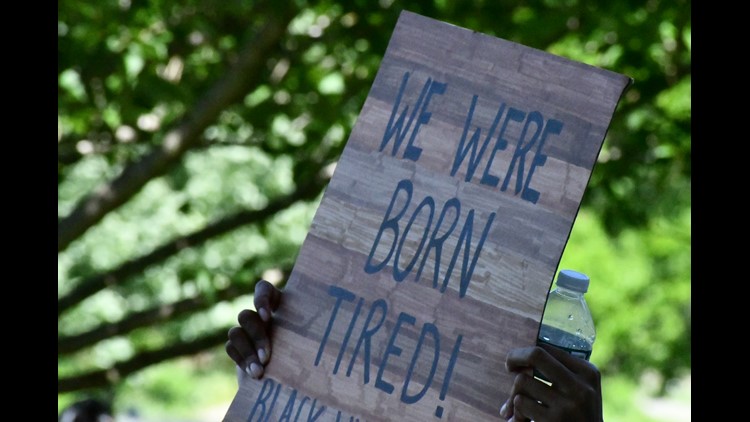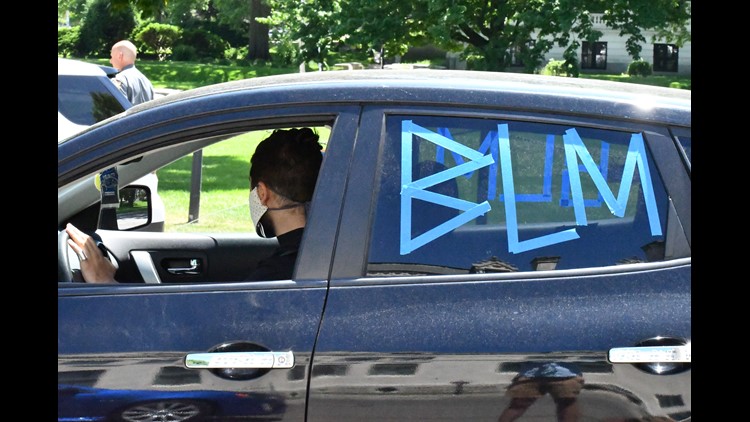CONNECTICUT, USA — This is part one of a weeklong series on FOX61. Tune in to the FOX61 News at 10pm Wednesday night for part two: Black In Connecticut.
The killing of George Floyd served as a catlyst for antional conversation about race in America. The clear image of Floyd on the ground gasping for air shook the Black community to its core, and sparked calls for change.
In 2020, becoming a hashtag -- like #GeorgeFloyd and #BreonnaTaylor -- is a real fear for people of color.
Time and time again many have watched on social media, Black and Brown men and women die at the hands of law enforcement. Whether ruled justified or not, the effects of seeing or the appearance of seeing the death of a human being has had negative effects on people of color.
It’s a reality that has had many adults of color have talks with their own children on how to conduct themselves when talking with police turning what should have been confidence in people who are set to serve the community into potential threats of people of color’s lives.
This report is set to break down the anger felt in the Black and Brown community and tell the “ugly truth” of what it means to be Black in America.
Prominent African-American politicians and demonstrators spoke about the death of Floyd.
“It was so in your face that even if you believed that he deserved that, you knew he didn’t,” said Senator Douglas McCrory when FOX61 sat down with him just a few weeks after the video showing the last moments of George Floyd shocked the nation.
Mikalea Adams who is a protestor in Bridgeport said, “There’s no way you can turn a blind eye after watching 8-minutes of a man suffocating to death.”
Brandon McGee who is a representative in Connecticut said, “You can’t deny that that was an injustice, that was a murderer who killed someone right before our eyes.”
Jazmarie Melendez also reacted to the video of George Floyd, saying she knows how it feels to lose a loved one at the hands of police as she references the loss of her brother Jayson Negron.
“I think that this injustice existed, but I think that was the moment that broke a lot of people’s restriction from feeling like I need to do something I think it put something heavy on people’s hearts to say I must do something,” Melendez said.
Similar thoughts were voiced in Connecticut and echoed by many seen sparking protests across the nation; some peaceful and others not.
But many ask how did we get here?
The Black Lives Matter movement started long before the death of George Floyd with his name joining countess others like Ahmaud Arbery, Philando Castile, Michael Brown, Trayvon Martin, Rodney King, and more recently, Rayshard Brooks.
Experts say to understand this Black Lives Matter movement, America needs to remember the past.
Dr. Delores Jones-Brown who is a professor at the University of New Haven Professor said, “We live in a legacy that is the unequal treatment of people based on their race and we allowed the law to be the mechanism to keeping that inequality in place.”
Dr. Jones-Brown says that since the earliest days of the United States this country was built in a way that went against its own ideals of being a nation of “freedom and equality.”
From the genocide of Native Americans to the enslavements of Africans, both historical facts told a different story than what was laid out in the U.S. Constitution: “All men are created equal".
A phrase that throughout history wasn’t the reality for many.
“For over 346 years that led people --or even people that have not been inclined-- to think that Black people were less than, said Dr. Jones-Brown. "It led certain people to believe that if the law says they're less than then they must be less than."
This led to what Dr. Jones-Brown says is the beginning of the “mistrust” between law enforcement and communities of color.
Take this pre-emancipation poster from Boston:

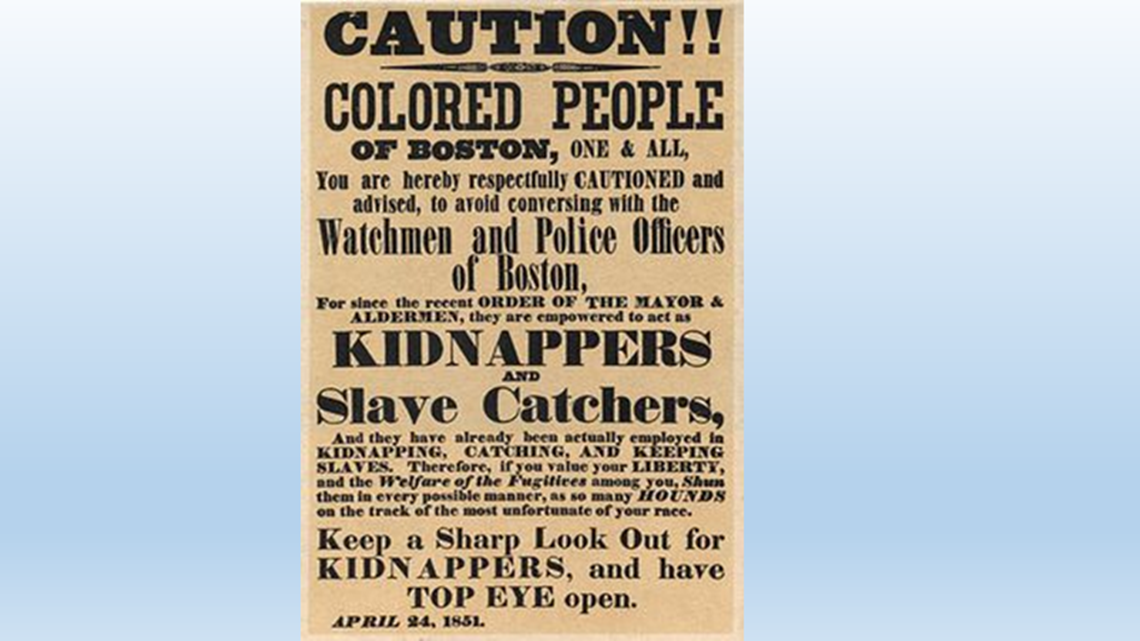
Back in the 1800s is where Dr. Jones-Brown says began the original term of “show me your papers” which is the same saying being repeated toward the immigrant community today.
So, when a Black man or woman was ever questioned, in that time, about their freedom status documentation was required, but many times that didn’t matter according to Dr. Jones-Brown
“So this poster from 1851, is warning colored people we would now call African-American or Black in Boston sometimes we think slavery is only an issue in the south that was not, so in Boston people were being warned not to be int ouch with police officers because police officers were slave catchers and they would return escaped slaves, but they would also kidnap free Blacks and transport them to the south,” said Dr. Jones-Brown.
Historical events like slavery, segregation, Jim Crow, and even the Civil Rights Movement all had rippling effects that Dr. Jones-Brown says are still in the fabric of society today.
Those ripples creating “systemic racism” according to historical experts who say that our past is still having an impact on our today; even if it doesn't appear outwardly racist on the surface.
And if you’re looking for examples, Dr. Jones-Brown says look no further than the past few weeks.
“We saw during the protests that there were many white people who were protesting, but we also saw footage of police officers not being violent against those white people and police even going up to a camera crew of color and arresting the journalist when there were other white journalists on the scene that were allowed to do their job,” said Dr. Jones-Brown.
Incidents like this can be found in almost every corner of the united states, but now in the modern age, it’s available for the world to see.
“In America, we are culturally conditioned to that the Black person, especially the black man is the boogeyman and it’s ingrained in us at an early age and unfortunately that’s the situation that we live in we are considered a threat,” Senator Douglas McCrory said.
A threat that makes the modern Black professional like Connecticut Senator McCrory pause and reflects about his own troubles being Black and in office.
“Can you imagine a seven- or an eight-year-old kid being told by an adult that you are going to be twice as good just to get what others have, so that was ingrained in me as a child and I use it every day of my life even here as a legislator,” said the senator.
The same goes for others who say no matter the profession, age, or societal standing, it’s difficult to escape the color of their skin.
Chief Ronnell Higgins who is an Africa-American police chief at the Yale Police Department said, “It’s tough… you know I’ve had police brutality in my family my brother was a victim of police brutality and I almost didn’t want to go into policing.”
If you look across the U.S., many incidents where police are used to control crowds during protests people like Chief Higgins says it’s crucial to remember why they joined the force.
“It was a calling, and I am glad that I did, but when I went into it believing that I can make a change and I believe that we have done a lot that’s good, but there is still so much more that we can do… I can remember after the Rodney King beating that, that was going to be a turning point but then 23-25 years later and we’re still seeing it, it has to stop, it has to stop, and I am here for police reform.”
Police reform is currently being debated on Capitol Hill.
Both democrats pitching sweeping changes last week and Republicans unveiling their proposal Tuesday, but experts say systemic racism is deeper than law enforcement.
Doctor Cato Laurencin from the University of Connecticut is calling the problems that people of color face- racism is a public health crisis.
“One of the interesting ways and one of the ways I am concerned about is when an unarmed Black person is killed by police and is seen and unarmed that has a tremendous effect medically on the greater Black community and interestingly we don’t see those effect when an armed Black person is killed, but when an unarmed Black person is killed there, as far as the Black community is concerned is an increase in mental health referrals, increased levels of depression to take place, so when I mention the effects of George Floyd’s death in terms of the Black community the effects are far reaching than many people know,” said Dr. Laurencin.
Dr. Laurencin publishing a number of articles that show racial disparities from a health perspective dating back decades.
At the bottom of this story, you can find a few copies of his work.
Dr. Laurencin explains, “If we go back to some of the oldest studies with the Tuskegee Experimental study people mention here and there, but maybe not know what the Tuskegee study was about, but it was the longest non-therapeutic clinical trial meaning it was the longest trial that had no benefit to the people who were undergoing the trial in the history of human civilization. It’s a trial in which individuals who were infected with Syphilis were not treated even after the cure for the disease was obtained, they went home… the men to their wives and infected them. Fathered children who were born infected and we say oh my god that’s so long ago; yes it started in the 1930s but it ended in 1972 and it ended not because someone said it’s the right thing to do and ended it, but because a news reporter found it and whistle blew and made it clear and the day the story came out people were still being treated or not treated in the study and so the long history that has taken place in medicine can be and continues now is there.”
Today, he says racism opens so much trauma in the Black community that it has visible negative health effects on people of color.
He says it’s a leading cause of racial profiling which has led to several deaths due to a preconceived notion of the Black skin being more intimidating in the eyes of many, but he says the treatment of Black people expands far outside of just police brutality and goes even into the medical field.
"But even in the more insidious area that surround being Black in America involving areas like housing takes place. So the hope is that when we address this... these issues we can address these comprehensively not just the area of health care, but al these area of influence in terms of policing yes, but police are human beings and this is all a part of the fabric of what's happening in America to contend with. We see the same thing when one buys a house or buys a car with these issues there so the hope is that we can come out of this comprehensively in addressing some of these problems,” explained Dr. Laurencin.
So where do we go from here?
First a look in our own neighborhoods.
Wednesday on the FOX 61 news, a look at what is to be Black in Connecticut as we here at FOX61 search for solutions.
Dr. Cato Laurencin’s Resources Links:
This is part one of a weeklong series on FOX61. Tune in to the FOX61 News at 10pm Wednesday night for part two: Black In Connecticut.

